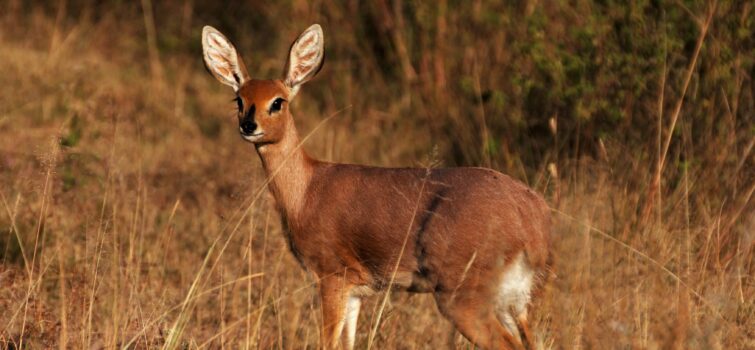You are my Mate!
February, the month of ‘love’. It inspires us to reaffirm our commitments to those we hold dearest, showering them with gifts and experiences to see us through another 12 months. Love does though, exert the same level of distress on our bodies as deep fear does. Mathematically speaking, we should engage with a dozen partners before we can be sure we have found the love match that fits exactly right for us.
Commitment, devotion, loyalty, duty. More than just a love affair in social animals who thrive on each other in many ways, this is a survival tactic for many organisms.
We think of monogamy as a declaration of our love, understanding, faithfulness and a vow of allegiance. This bond can be broken by infidelity, disagreement or perhaps a change of heart. While this is driven by emotion, in truth we can live apart, or part ways, if we chose too. Our lives don’t depend on it, but they should.
It’s complicated, it should be easy and care-free as it is in the movies, but it just isn’t. This is because it’s all about choice. We have to make the right choice because anything else is just not acceptable.
Out on the Reserve, commitment means survival. Love and the choice of partner is about to get real.
Choosing the right partner for animals, such as in the dwarf antelope species which include Steenbuck (Steenbok) and Klipspringer, or even in birds like the African Paradise Flycatcher or the Mocking Cliff Chat, is crucial for survival and reproductive success. Its more than a choice, it’s a necessity and it is called monogamy.
Monogamy, the mating system where each sex has only one partner, either seasonally or for life, usually forming a pair-bond (Carnaby, 2007).
Partners for Life
The Neotragini, these are the small or dwarf antelope. They include the Steenbuck and Klipspringer which are commonly seen on Welgevonden Game Reserve. As is a tribal trait to these small antelope, both species are committed to their mates for life, adapting to their habitats to ensure success and survival.
The Steenbuck. Their name is borrowed from the Afrikaans, Steenbok, which refers to the brick like colour of their coats (Smithers, 1990). In Afrikaans ‘brick’ is steen.
They are small, graceful antelope with long slender legs and slim bodies (Smithers & Skinner, 1990). Males weigh around 11kg where the females are slightly heavier. Only the males have horns, which are short and grow almost parallel, curving forward very slightly. They are easily recognized by their size and colour, and more typically by their every large ears.
Large ears are thought to improve hearing in denser habitats but also play a thermoregulatory role, being richly supplied with blood (Estes, 1991).
Another notable feature is that they are often found singularly or rarely in pairs. This is a deliberate tactic.
They prefer to occupy open country and stay away from forest and thick wooded areas. Sticking to the grasslands with tall grasses and some shrub for cover and food is typical of the Steebuck. They avoid open, short grassland areas. We sometime see them venturing into burnt areas, although only briefly to feed on new growth. Their habitat preference is determined mainly be food preference.
They lead solitary lives except when a female has a lamb or when in oestrus and is accompanied by an attendant male (Smithers & Skinner, 1990). They are usually diurnal, with peak activity during the hot summer months being in late afternoon or early morning.
Steenbuck are territorial with territories of males and females overlapping. These they defend through intimidation and presence, seldomly fighting. They are shy secretive antelope and will utilize areas in their territories for different daily purposes. They have preferred feeding areas, resting areas and latrines. Latrines are usually created by scraping a bare patch, urinating of defecating, and then covering it up using the front hooves. Believed to assist in concealing their presence and also to accentuate their scent as a territorial marking. Exposed pellets and urine dry out quicker and subsequently lose their scent. They are the only antelope known to bury their dung.
Pairs with interlapping territories are monogamous, being distributed in couples but preferring to rest and feed alone. Little is known of this interesting sexual monogamous behaviour. When seen in pairs, they will even flee in opposite directions. This is believed to be a behaviour adapted as a result of their open habitats with patchy shrubs for cover, making it safer to cohabitate, but alone. There are no records of males keeping more than 1 female and even in captive studies where males were placed with 2 females, the male mated with 1 female and fought the other.
Interestingly, Steenbuck thrive in open woodland areas that have been disturbed, such as by Elephant, where the pioneer plant species that comprises a large part of their diets flourish. These areas also provide ideal cover for them (Estes, 1991).
Being committed and monogamous but living alone does make for interesting social behaviour. This commitment to each other is possibly necessitated by open habits that they prefer and or the preponderance of males than females in many populations. With males to female ratios skewed, securing, and keeping a mate is critical to improving reproductive success in a highly competitive environment.
Did you know?
Sexual monogamy refers to males and females that bond for life and only have eyes for each other. Social monogamy refers to male and female pairs who mate, raise a young and spend time together but will also have other mating partners. This is usually seasonal where they form a seasonal pair-bond. Not strictly monogamous.
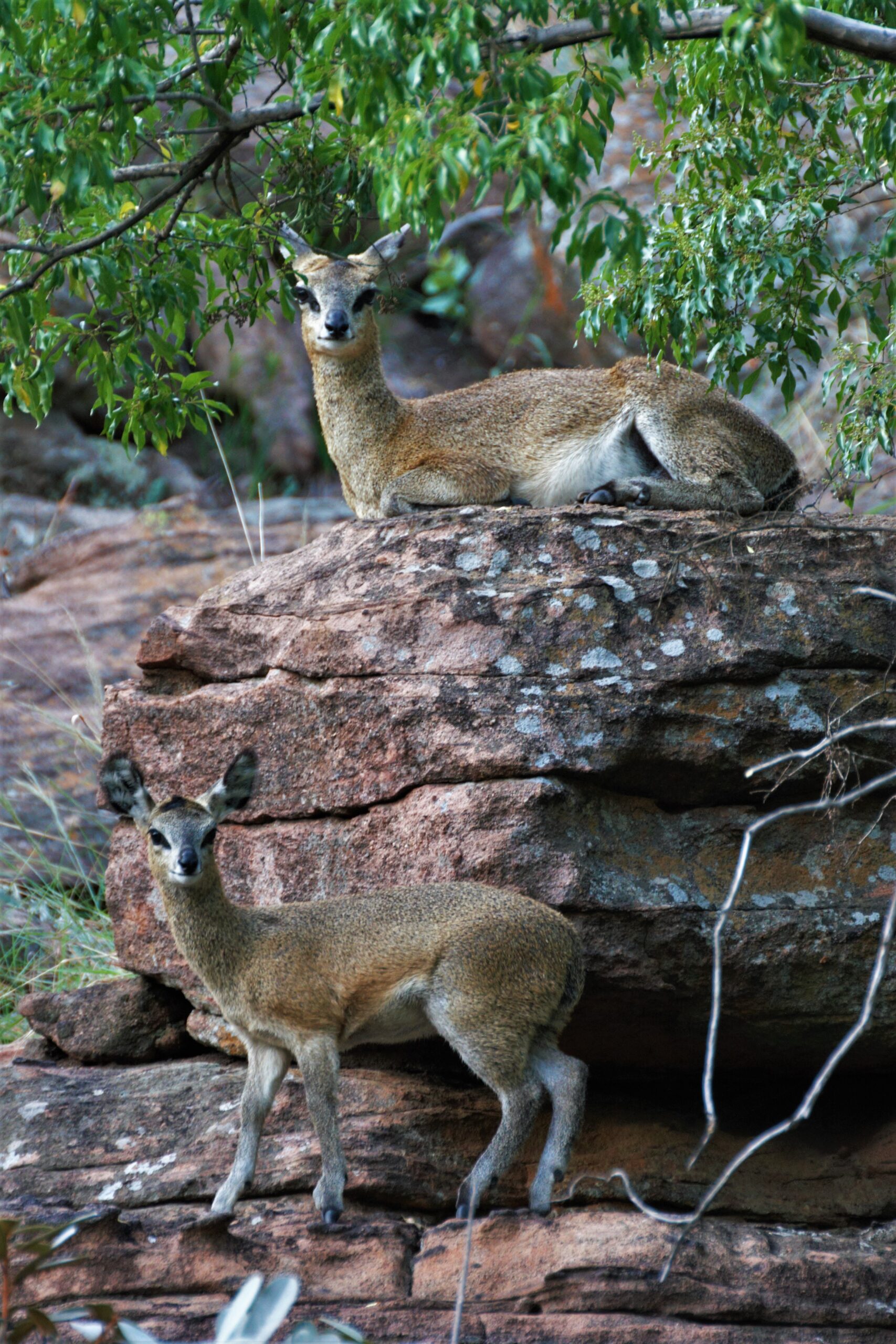
The Klipspringer. They too have borrowed their English name from the Afrikaans name which is very descriptive of the rocky habitat these little antelope inhabit and their agility across rock faces. (English – stone in Afrikaans – klip, English – jump, Afrikaans – spring)
These small agile antelope are of similar size as the Steenbuck, with the males weighing around 10kg and the females heavier at 13kg.
They are quite distinct in their appearance, with a very upright position and of course their preferred habitat a recognizable feature. They are varied in colour throughout the population but on the Reserve have a fairly distinct, light olive golden green hue over a grey base in the coat. The large pre-orbital gland below the eye is very noticeably. Their ability to gracefully navigate over rocky terrain and on rock cliffs, standing on the tip of the hoof, make them very distinguishable from other small antelope species. As is common in the Neotragini, only the males have horns. Short, widely spaced, rising up to a smooth point that curves slightly forward.
Confined to rocky habitats, their distribution is limited as a result of this niche existence. This possibly indicates their preference to form monogamous pairs for life. Mostly found in pairs or small family groups, they are sometimes seen gathering in groups of up to 6, usually in preferred feeding sites (Smithers & Skinner, 1990).
They are mostly diurnal, venturing into open areas to feed and graze, often with one of them keeping watch in a typical pose, balanced on a rock. If disturbed, they flee back to the safety of the rocky shelters.
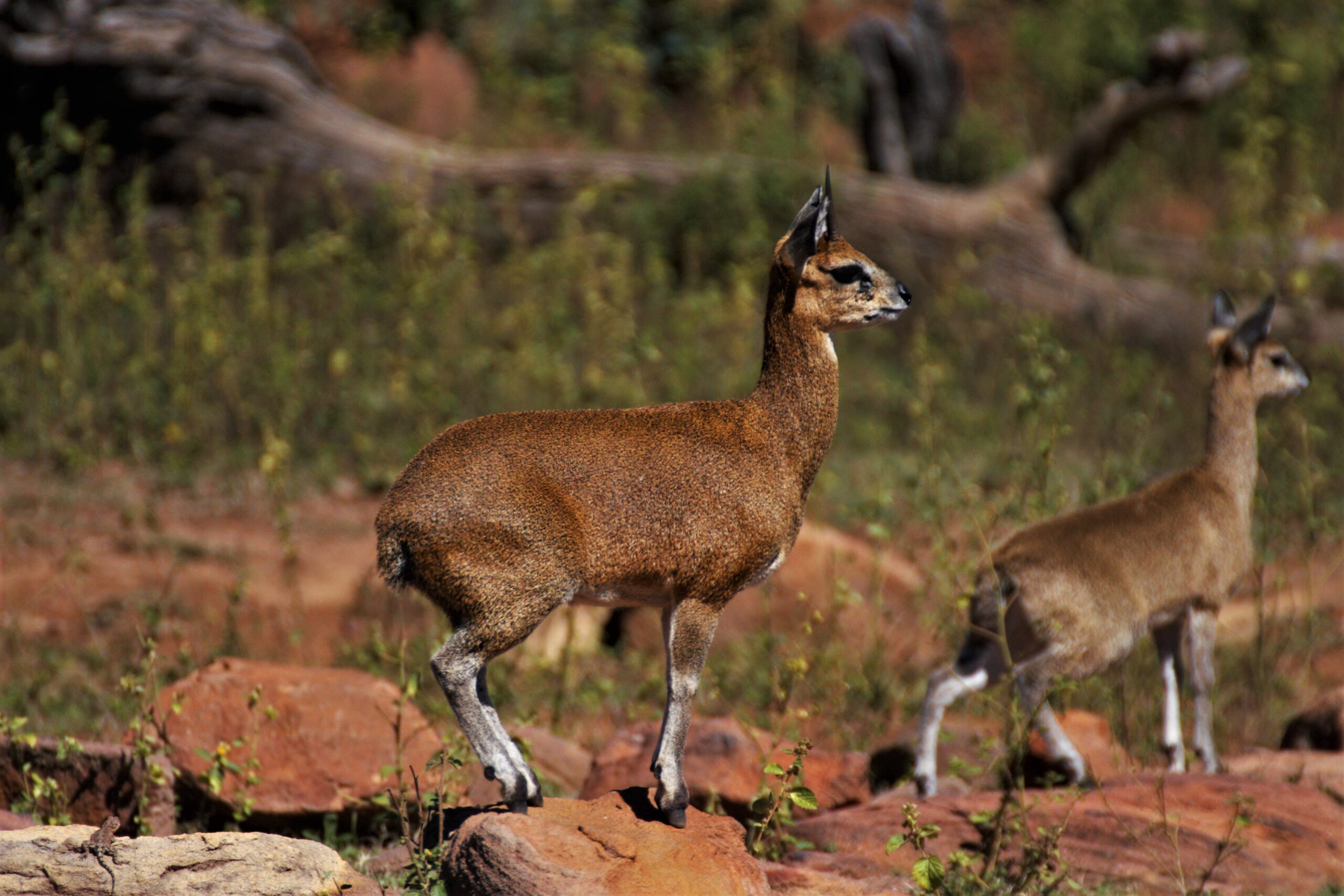
The males are territorial, occupying areas as large as 15 hectares to 38 acres. This is dependent on rainfall, and of course food abundance. In very dry areas their territories can be twice as large.
Although regarded as browsers, grass does make up a small portion of their diet. On this Reserve, I would think that grass makes up a slightly larger portion of their diet, where overall browsing quality is quite low. Their preferred plants are horn pod, kudu berry and velvet bushwillow, all of which are found in abundance, particularly in and around the Camp.
Trespasses are chased out of male territories by the male only, with them rarely fighting. Territory defense is also done by presence, visual displays of the males perched on a noticeable rock, with scent gland markings being used as well, but only by the males.
A single lamb is born, at any time of the year. The lamb will spend the first 2 to 3 months of its life on its own, after which it will join the parents when foraging. There are two families which we regularly see at Makweti, enjoying the lush browse around the Camp, and venturing to the waterhole to drink from time to time. Active mostly in the morning, these resident families delight visitors to the Indaba lounge. Interestingly, they will take turns drinking, each family waiting for their turn. The male or female taking watch while the other or their lamb drinks, always alert.
They show a high fidelity towards each other and their territory and are seldom seen far apart. They are a true example of the perfect couple.
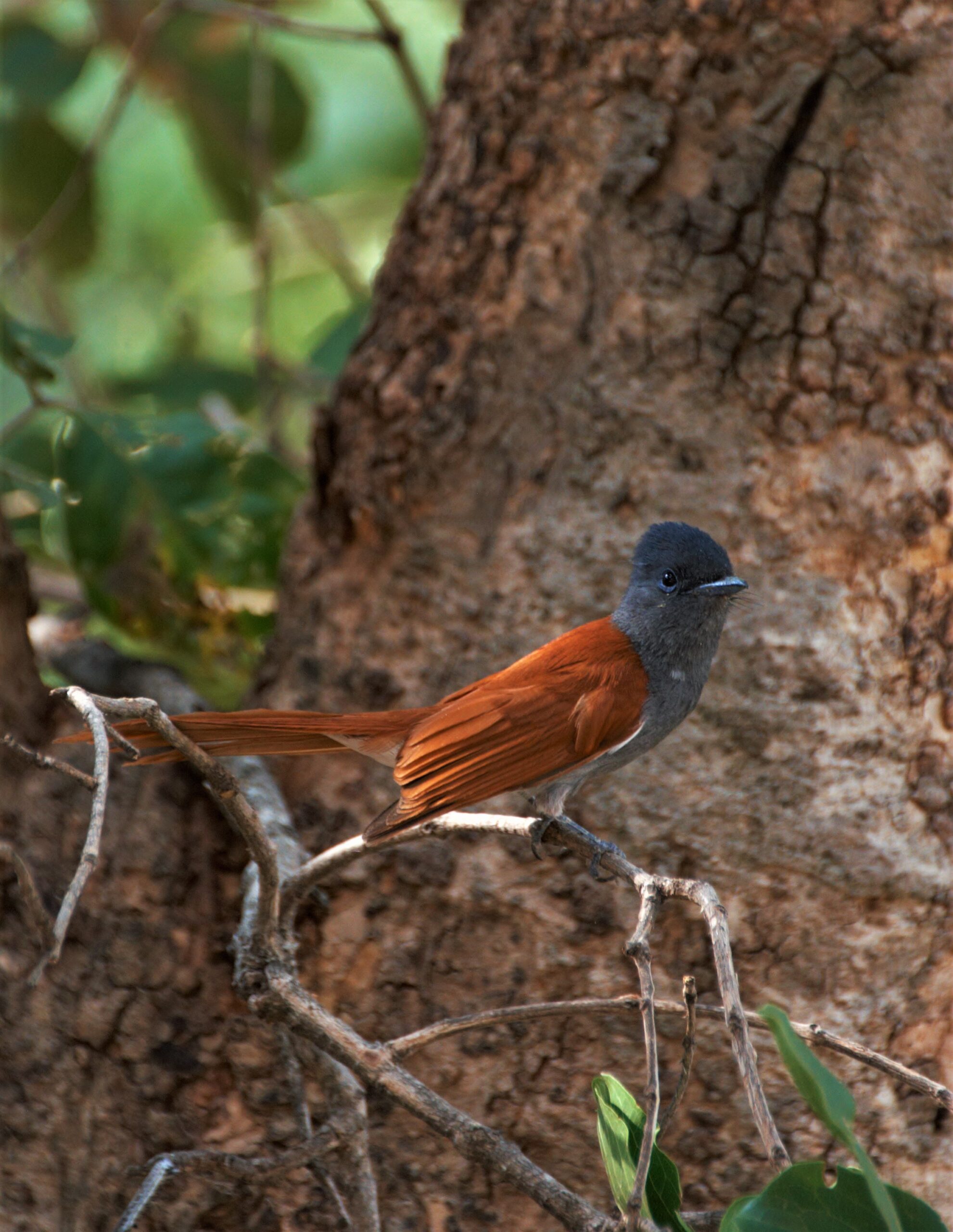
Birds of a Feather
Monogamy in birds is twofold (Maclean, 1990). Firstly, if the sex ratio of males to females is about equal, and males can acquire both a territory and a mate, then competition is not intense, and where sexual dimorphism (where the male is larger than the female) is not advantageous, then species will choose the monogamous mating system, remaining committed. Secondly, for the females, if they outnumber the males, and the males can acquire a territory, then the rewards for the female to acquire a male are high. In these conditions, should they remain then monogamy is the preferred mating system. In these instances, the male parental care to the young is almost always equal to that of the female. We see this in two feathered friends who reside in Makweti with us.
The African Paradise Flycatcher, a beautiful bird that visits us at Makweti often. They are striking and like no other. The male with his beautiful long tale, with both sexes the richest bright rusty colour. The head of both a beautiful metallic greenish black. Busy little birds, there are a number of them in the hills around Camp and particularly around Suite 5.
These seasonal breeding migrants arrive in the Reserve late September, early October. They usually leave around the end of March, beginning of April, depending on where the head to for our Winter. We have had pairs stay with as in Camp until as late as the end of April. Those travelling further will leave earlier, as they venture as far as tropical Africa into the Congo and Cameroon. Those leaving later are believed to only go as far as northern Kruger or parts of Mozambique to overwinter.
Usually seen in pairs or solitary, they are active throughout the day from first light until late dusk.
There is no obvious territoriality in males and little rivalry,
possibly as a result of abundance of food and their chosen mating system.
They are monogamous, the devoted couple. Both participate in nest building with the female doing most of the building and the male bringing nearly all the material. The nest, a small, neat cup decorated and concealed with spider webs and lichen, sometimes using animal hair or moss to line the inside.
It is believed that the first chicks raised to almost independence, will assist with raising the second brood, almost as a family unit. This is unsupported as a theory and may be locally relevant in some instances. This is called cooperative breeding and if you recall the Blog on Oxpeckers, December 2018, they too use this behaviour to raise their young.
None the less, they remain committed and raise the family together. In one instance the same nesting site was recorded being used by the same pair for up to 6 consecutive years. Very rarely do they use the same nest, with each new one being built close by. They are committed, busy and successful.
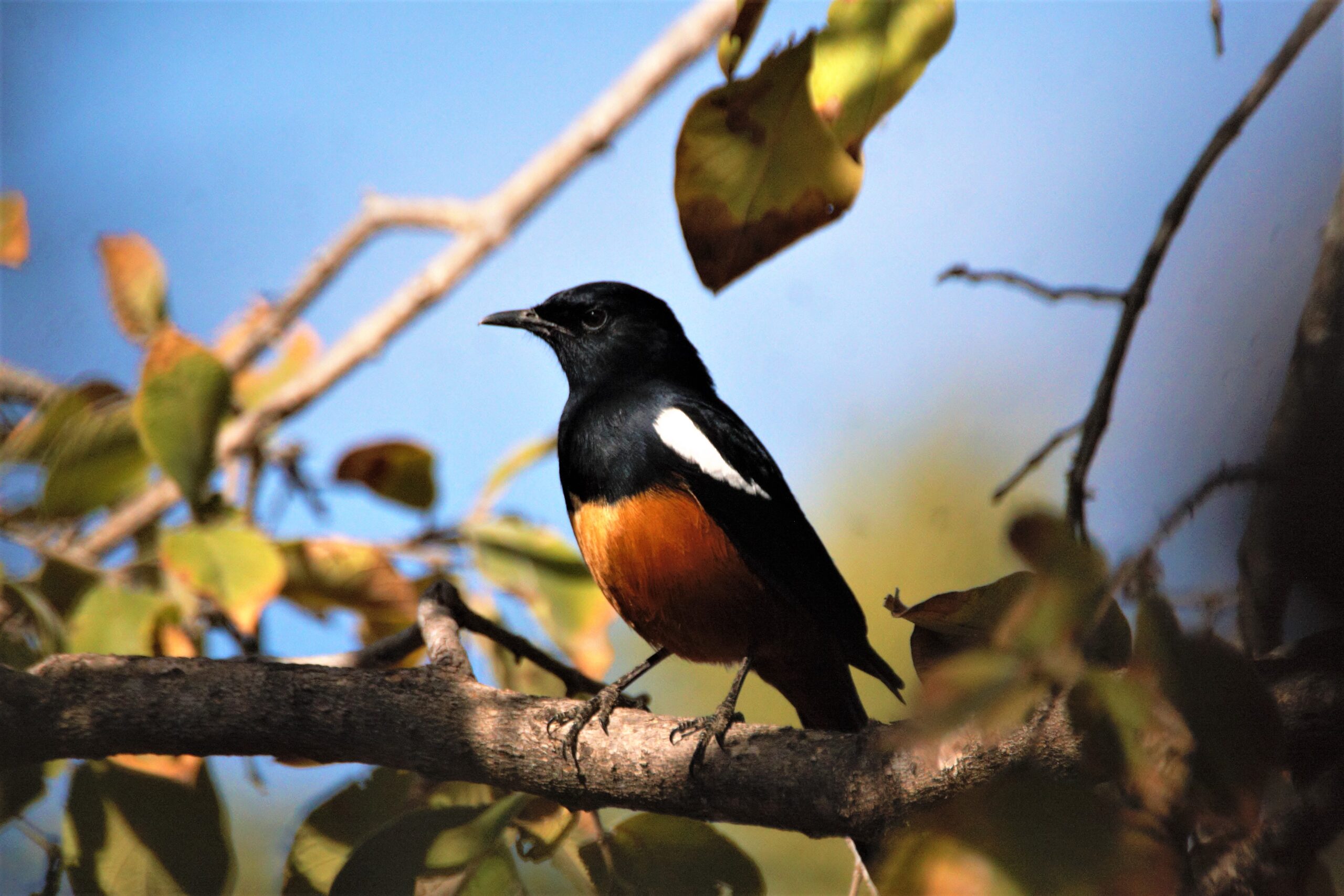
Sitting at the Indaba deck, enjoying the Klipspringer come through to the waterhole, along with the zebra, kudu, impala, and warthogs, you will be entertained by a couple of sometimes noisy, always busy, Mocking Cliff Chats. Our second committed couple.
These monogamous, highly territorial couple will aggressively defend their space, with a loud synchronous song duet and threat postures. And why not, the Indaba is a beautiful space! Together they spend their time in love, staying abreast of their intruders and building a single nest in which to breed. The nest is a felt lined bowl, using antelope hair and more commonly hyrax (dassie) hair to soften the inside. This little couple will sometimes even evict other birds, such as swallows, from their nests, hijacking the perfect already built bowl to raise their young. They are tame around human settlements where they forage for insects and fruit.
Little is known of their breeding success and habits, giving them a reputation of mystery, much like Bonnie Parker and Clyde Barrow in the 1930’s. What we do know is, they are inseparable and very much committed.
There is success to be made in all scenarios in nature, you just need to adapt and stay alert. Having a caring committed partner makes it much easier.
And so, our lesson to be learnt from this is – Love your partner like your life depends on it!
Text – Neil Davison
Photographs – Neil Davison
References:
- 30 years of personal observations by the author on various Reserves in South Africa including Welgevonden Game Reserve
- Trevor Carnaby, Beat about the bush: Mammals, Jacana, Johannesburg, 2007
- D. Skinner and R. H. N. Smithers, The Mammals of the Southern African subregion, University of Pretoria, Pretoria, 1990
- Richard Despard Estes, The Behaviour Guide to African Mammals, Russel Friedman Books, Johannesburg, 1991
- Gordon Lindsay Maclean, Ornithology for Africa, Natal University Press, Pietermaritzburg, 1990,
- A.R. Hockey, W.R.J. Dean, P.G. Ryan, Roberts Birds of Southern Africa, VII Edition, John Voelcker Bird Book Fund, Jacana, Cape Town, 2009
- Trevor Carnaby, Beat about the Bush: Birds, Jacana, Johannesburg, 2018

